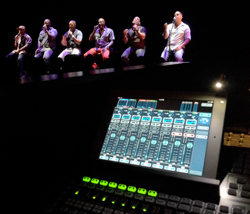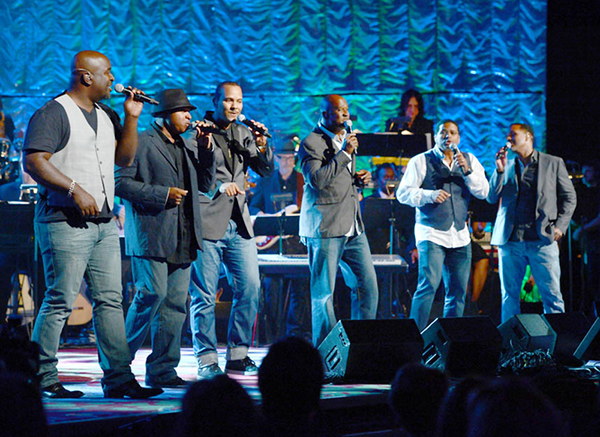
“This approach provides a great stereo spread, but the other thing that’s amazing is that the capsules are only about an inch from the piano lid when it’s shut,” he says. “The 181s are one of the only mics you can do that with, and they sound incredible. Even though they’re cardioid, they sound really good with the back closed off. The first time I took them on tour was in Europe, and when the local engineers heard the piano, they pretty much lost their minds.”
Shure ULXD4Q quad channel digital wireless receivers also fit the tour’s weight/size criteria. “The first thing that drove the choice was that Shure put four units into one rack space and dropped their weight,” Huerta states. “Four units weigh roughly 14 pounds, while before, two units weighed about 23 pounds, so we were pushing 100 pounds of wireless systems in flight cases, which cost thousands of dollars annually. Now I have eight channels in two rack spaces, which is so small and light that I can actually even carry them on to the plane if I want.”
The low self-noise and overall clarity of the digital wireless systems is another big plus. “I’ll take a microphone when I’m ringing out the sound system, put it at the front of the stage, crank up the gain, push it all the way up on the fader, and I don’t hear self-noise or hear the unit turn on and off,” he says.
Another boost to clarity comes from the group’s adoption of Westone ES5 earworn monitors with a proprietary flex-canal body that’s custom fit to each performer. The ES5 includes five tuned, balanced armature drivers (LF, two MF and two HF) fed by a passive 3-way crossover. These work in tandem with the PSM900 personal monitoring systems.

The emphasis on clarity is particularly crucial for the a cappella style. “Some might think mixing an a cappella act is easy, but it’s more difficult,” Huerta states. “It’s like mixing six guitars on stage at once, very difficult to create separation with so many similar instruments in the mix.” The house mix is individual tracks, but for monitors he mixes down to a stereo pair and pans everything so the group can hear the blend.
Sonic Thing
Traveling with a house sound system is out of the question, which means adapting to each system from venue to venue. Huerta’s rider typically calls for active 3-way line arrays from premium makers such as Meyer Sound, JBL, EAW and NEXO, and he likes subwoofers on the deck to help the group can feel the bass. And he insists on having a substantial number of subs.
“Enough subs for a rock band,” he says, “because I push the low end as much as you would with a rock band. That’s a sonic thing and an energy thing.” It’s key to audiences feeling the full power of the group, whether they’re singing and/or acting as their own rhythm section. Further, when Dentley and the Kibbles go into full-fledged vocal drum mode, which accounts for about 25 percent of their performance during a show, Huerta runs the subs on an aux.
“I’ll open up the low end and send their channels through the subs, so it’s thumping 40 to 60 Hz just like a normal kick drum,” he explains. “That adds power to the low end and really excites the audience. The kick sound should thump you in the chest just like a real kick drum. And when it comes to Alvin’s bass vocal, he sings down to 50 Hz, so I have to have the low end for that as well.”
